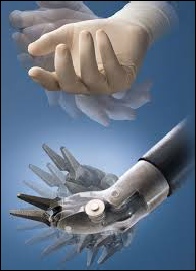

GLASGOW COLORECTAL CENTRE
Scotland’s Best Private Colorectal Surgery & Colonoscopy Clinic
info@colorectalcentre.co.uk
If you have any questions, call Catherine on 0735 506 6597

© Glasgow Colorectal Centre. All Rights Reserved

 Book an Appointment
Book an Appointment
Any questions? Call Catherine on 0735 506 6597
Info@colorectalcentre.co.uk
Robotic surgery is the latest advance in minimally invasive surgery, which enables the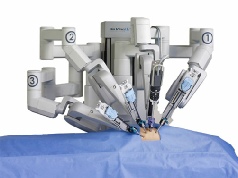 surgeon to operate using highly manoeuvrable keyhole instruments, allowing ultra-
surgeon to operate using highly manoeuvrable keyhole instruments, allowing ultra-
This equipment is extremely expensive and the capital costs to set up a surgical robot such as the da Vinci™ system costs well in excess of 1.5 million pounds. The disposable costs for each operation may exceed several hundred pounds. Although the robotic arms can be cleaned and re-
Robotic surgery is now very well established for operations on the prosta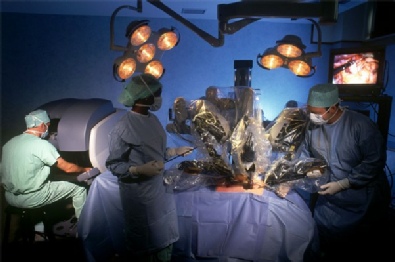 te, lungs, throat, bladder, spleen as well as gynaecological operations. It has even been used to perform heart bypass operations. It is also increasingly clear that robotic surgery may offer real benefits to patients in selected rectal cancer operations. Early studies have suggested that robotic surgery has benefits over open surgery. These may include the following (deSouza 2011 and Park 2011)
te, lungs, throat, bladder, spleen as well as gynaecological operations. It has even been used to perform heart bypass operations. It is also increasingly clear that robotic surgery may offer real benefits to patients in selected rectal cancer operations. Early studies have suggested that robotic surgery has benefits over open surgery. These may include the following (deSouza 2011 and Park 2011)
- Less blood loss
- Less pain
- Faster discharge form hopsital
- Quicker return of bowel function
- Quicker return to a normal diet
- Faster recovery
- Better cosmetic result
Robotically assisted rectal cancer surgery may also have benefits over and above laparoscopic or conventional keyhole surgery. Potential benefits include the following (Baik 2009 & Kim 2012)
- Lower conversion rate to open surgery
- Fewer major complications
- Shorter hospital stay
- Quicker return to a normal diet
- Quicker return of urinary function
- Quicker return of sexual function
Unfortunately, given the significant initial cost, the healthcare system in the United Kingdom (both NHS and private sector) has been slow to invest in this technology. A recent report published by the Royal College of Surgeons , Innovation to Adoption: Successfully Spreading Surgical Innovation has highlighted the fact that patients are missing out on the benefits of these new techniques because the NHS has failed to set up programs to promote their use within the United Kingdom. (https://www.rcseng.ac.uk/publications/docs/from-
This is particularly so in Scotland where robotically assisted surgery is not currently available. However, Aberdeen Royal Infirmary have received funding to set up a robotic surgery unti. The Scottish Government is to invest up to £1 million to complement the fundraising efforts of UCAN, the urological cancer charity in the North of Scotland, to purchase a robot that surgeons use to perform minimally invasive surgery – initially for prostate cancer.
Scotland’s first Robotic-
It is hoped that this is the start of a process to deliver nationwide robotically assisted surgery. The Scottish Government has also promised to work closely with Health Boards and cancer charities to strategically plan how to best to deliver these services across Scotland. It is expected that patients in Greater Glasgow may be the next to benefit from robotically assisted surgery and an application for funding a robotic surgery unit at new South Glasgow University Hospital has already been made.
The da Vinci™ robot has a monopoly on the market at present, in part because of the large number of patents that protect their device and prevent similar devices coming to market. The da Vinci™ robot is 2 m high and 1.5 m across. It has up to 6 arms which pass through tiny (5-
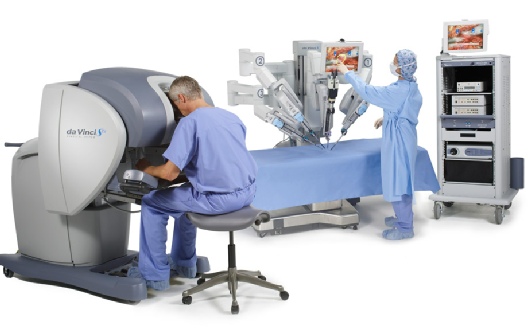
The robotic arms are controlled by the surgeon who looks through a special monitor to obtain a high definition view of the operation site. The surgeon operates and manipulates the robotic arms while sitting at a console which is separate from the patient. The console is usually kept within the operating theatre. However the surgical control console does not have to be physically attached to the robot and could be in a room alongside the operating theatre or indeed further afield.
The robotic arms are only 10 to 15 mm in diameter but can rotate 360° so they are more dextrous than the human hand. The surgeon also gets a 3-
References
- deSouza AL, Prasad LM, Ricci J, Park JJ, Marecik SJ, Zimmern A, Blumetti J, Abcarian H. A comparison of open and robotic total mesorectal excision for rectal adenocarcinoma. Dis Colon Rectum. 2011 Mar;54(3):275-
82. - Park JS, Choi GS, Lim KH, Jang YS, Jun SH. S052: a comparison of robot-
assisted, laparoscopic, and open surgery in the treatment of rectal cancer. Surg Endosc. 2011 Jan;25(1):240- 8. Epub 2010 Jun 15. - Baik SH, Kwon HY, Kim JS, Hur H, Sohn SK, Cho CH, Kim H. Robotic versus laparoscopic low anterior resection of rectal cancer: short-
term outcome of a prospective comparative study. Ann Surg Oncol. 2009 Jun;16(6):1480- 7. Epub 2009 Mar 17. - Kim JY, Kim NK, Lee KY, Hur H, Min BS, Kim JH. A comparative study of voiding and sexual function after total mesorectal excision with autonomic nerve preservation for rectal cancer: laparoscopic versus robotic surgery. Ann Surg Oncol. 2012 Aug;19(8):2485-
93. Epub 2012 Mar 21.
Robotically assisted surgery: where are we at in Scotland?
Jan 2015)

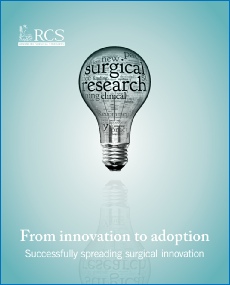
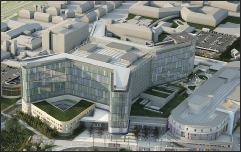
New South Glasgow Hospital
